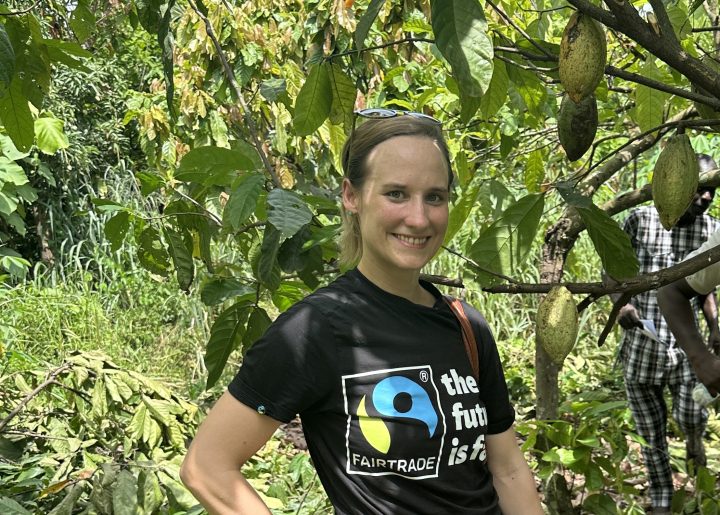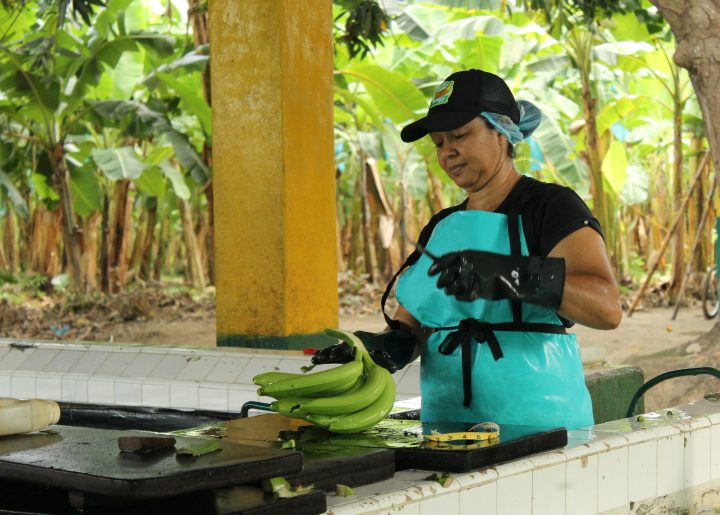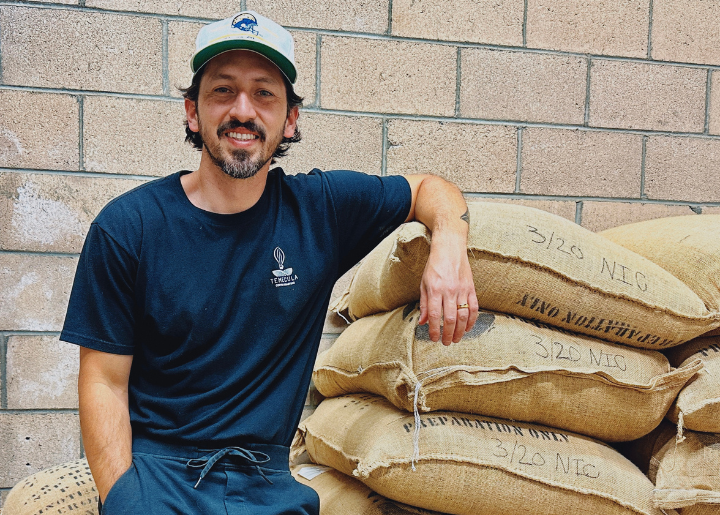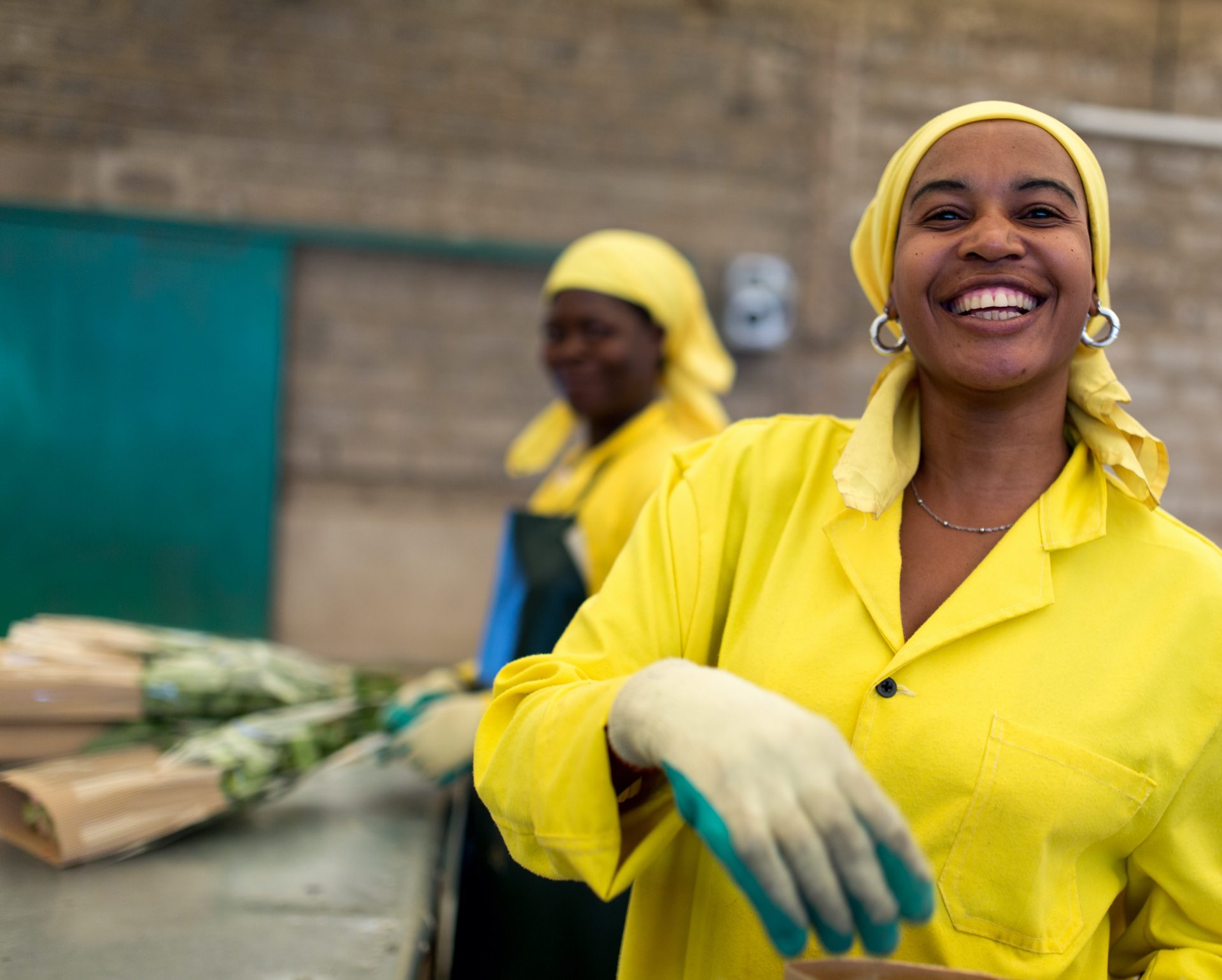A First-Hand Look at Fairtrade Bananas in Colombia
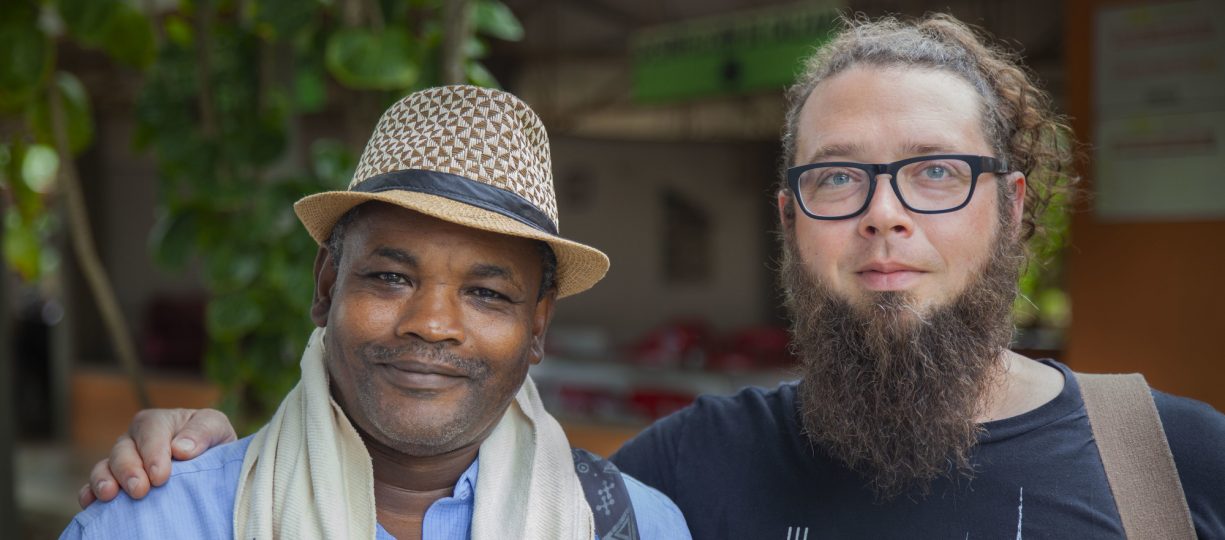
Last October I participated in a survey for National Co+op Grocers about bananas—how many we sell, how much we charge, where we source them, and so on. I hadn’t given the survey another thought until our General Manager Todd nonchalantly asked me how hard it would be for me to break away from my obligations for a week.
I had entirely forgotten that as a prize for participating in the survey, three stores would be selected to send a representative on a trip to Colombia. I hadn’t for a moment thought that we’d be selected, or that I would have this fantastic opportunity. Yet on March 22nd, I found myself on a midnight flight to Colombia, on the first leg of a journey to spend a week touring Fair Trade banana plantations, projects, and farms.
It was a long flight, with layovers in Houston and Panama City. Twenty hours later I stepped into a hotel in Medellin to meet my travel companions for the week. Thankfully, I’d at least met one of them before, Chris Dick of NCG. He’d been at Organicology in Portland, an organic produce trade show hosted every other year by Organically Grown Company, one of our major suppliers. Otherwise, we were a group of strangers: another representative from NCG, two folks from Fairtrade America, and two other produce managers from co-ops in the Midwest and New York areas respectively.
Most of the next day was spent travelling to Santa Marta, a coastal city on the Caribbean Sea close to many of the banana growing regions. We went over the very full itinerary and had an initial presentation about the Fair Trade system and its impacts in Colombia, which I’ll write more about in the future.
On that Monday, we finally got to visit some banana farms. Farms and plantations range from just a few acres to hundreds of acres, and we visited a wide variety. Bananas are an interesting crop. Banana trees aren’t actually a tree but an herbaceous perennial. The Cavendish variety that we see most often grows to about 16 feet tall, and each plant produces a single stem of bananas. They aren’t strong plants and often blow down during wind storms. The stalk is composed of layers of leaves and is soft to the touch. Each plant has two generations of offspring growing, the sons and grandsons, of which the farmer selects the one best situated in regards to sunlight. When the stem of bananas is cut the mature plant begins to die, and the son starts to grow.
Bananas are in constant production; each plant takes about 9 months to mature and produce, and they don’t follow a seasonal cycle. None of the picking, washing, selection, or packing of bananas is automated—it’s all done by hand. The bunches are cut and carried back to the washing shed, either one at a time by hand or ten at a time on zip-line like cables. They are graded, cut into bunches, washed, and packed into boxes, all by hand. Each bunch of bananas fills about ¾ of a case. It’s extremely labor intensive.
Bananas are a very important crop for Colombia, their third largest agricultural export behind coffee and flowers, and an important food source. All of the bananas that don’t make the grade for export are sold domestically.
I want to mention two common Colombian methods of banana preparation. One is very simple, a ripe banana sliced in half lengthwise and then grilled or fried. You’ll see this served alongside beans and rice, meat and arepas (a flat, fried masa-dough cake, much thicker than a tortilla). The other preparation that fascinated me was mashed green bananas. Plantains aren’t eaten as much in Colombia as in many other banana and plantain producing countries. Instead, green bananas are used. To make this mash, take 4 very green bananas and cut the tops off, exposing the flesh, then cut a shallow slit down the length. Bring a large pot of salted water to a boil and cook the bananas for about 15 or 20 minutes, until soft. Use a knife and fork to separate the fruit from the peel and put into a pan with 5 tablespoons of milk and 2 tablespoons of butter, and place over low heat. Mash with a fork or potato masher until very smooth, then season with salt and pepper to taste. It’s incredible—like the smoothest mashed potatoes you can imagine. They are commonly served with cheese curds melted over the top, or mixed with sautéed tomatoes and onions.
I had a wonderful time and learned a lot. Colombia is a beautiful country with a complicated and violent past, but it seems to be healing now. The sale of Fair Trade products is helping with its restoration, funding improvements to farming methods and providing opportunities to people who don’t have many otherwise. I look forward to delving deeper into the intricacies of the Fair Trade system and sharing the specifics of how it’s helping people in Colombia.
Originally published by Skagit Valley Food Co-Op.
Topics
We’re in this together
Fairtrade America partners with brands on the journey to certification and beyond. We can help with everything from finding a certified supply chain to marketing your newly certified product.
Get in Touch
